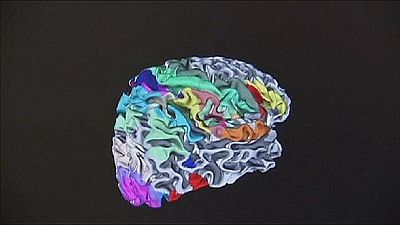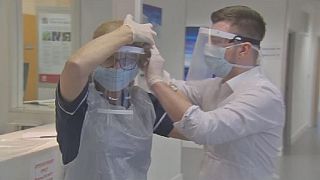Science
It should soon be possible for medics to take a walk through your brain, quite literally.
Neuroscientists have completed a hologram which could one day allow doctors to peer into a complete 3D image of their patient’s brain.
The hologram according to some clinicians is the next step forward from MRI scans.
Taking a walk inside ones brain may sound like science fiction, but this hologram takes us a step closer towards that reality, according to the researchers who created it.
The team at 3D developers Holoxica claim this is the first ever 3D digital hologram of the human brain’s fibre connections.
Developers say the hologram of a healthy brain was made via a technique called “Fibre Tractography”.
The technique tracks nerve fibre pathways inside the brain by measuring the movement of water molecules in the brain’s white matter.
Developers claim the use of holograms will have a profound impact on medical science allowing clinicians to identify, diagnose and treat a wide range of neurological conditions.
Neurosurgeon and Alzheimer’s specialist at Britain’s National Hospital for Neurology and Neurosurgery, Dr. Basil Ridha is interested in the technology’s future potential.
He said in cases where there is “degeneration, or you have areas of inflammation, or a stroke” it is important to “see how anatomically it impacts on surrounding structures and pathways”.
“So the brain now it’s not only the location of a lesion, but what networks pass through that area, that is of importance. So sometimes we want to know, for example, the visual pathways involved in a particular lesion,” Dr. Ridha added.
Dr. Ridha says brain holograms could be useful educational tools for studying medicine.
“The brain is such a complex three dimensional structure and sometimes it is quite difficult to describe, or understand the actual connections. So to see it in 3D that may be a short cut to education and it can reinforce the learning process.”
The development of the 3D holographic display was financed from the EU’s Research and Innovation budget.
Developers say they plan to adapt their holographic video display to existing medical imaging machines including MRI, CT and Ultrasound scanners.
Euronews














Go to video
Dicovery: scientists believe mystery fossil is Denisovan, early human ancestor
01:45
Scientists use new technology and AI to discover animal intelligence
02:20
Morocco: One of the world’s oldest universities draws global students
01:01
Museum curator detained at Turkish airport for smuggling spider and scorpion samples
Go to video
The Earth is spinning so fast that it will soon lose a second
02:40
Sierra Leone: a science and leadership festival for young people